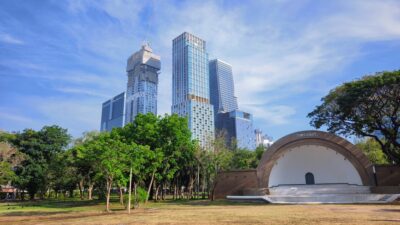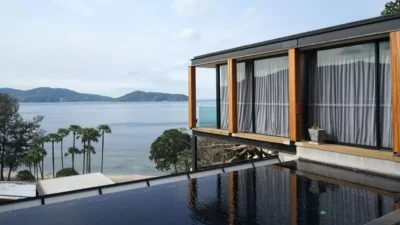Meet the vagabond architect behind India’s housing scene
In adhering to a frugal philosophy espoused by Mahatma Gandhi, Vinu Daniel is helping to shake up India’s home building setting
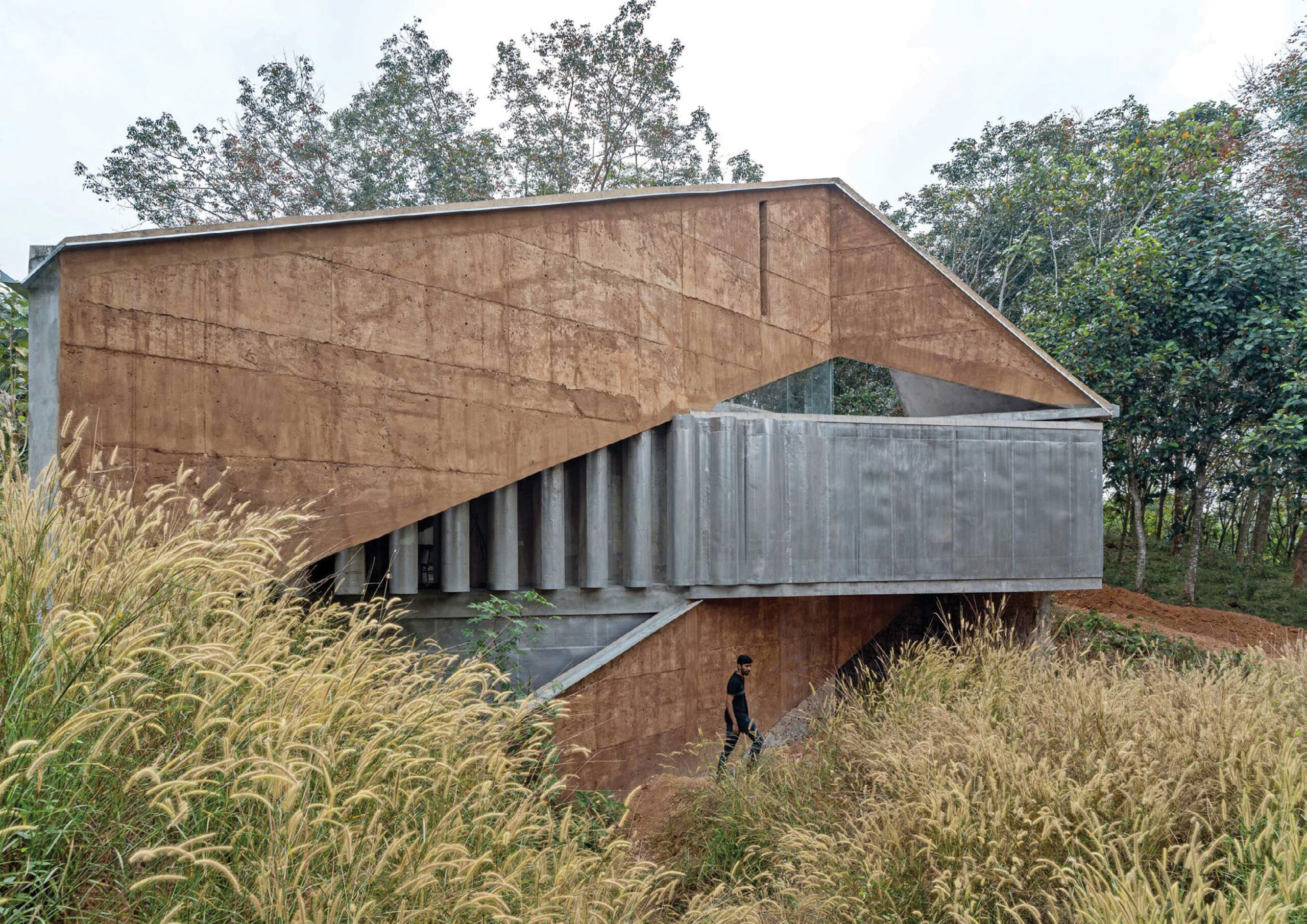
Vinu Daniel has had a remarkable year. The Indian architect’s TED Talk on “the beauty of building with mud and trash,” delivered in April, is approaching a million views.
Time Magazine named him in September to its Time 100 Next list, which spotlights rising stars shaping the future of industries.
And his dreamlike Chuzhi House, built with scavenged and discarded local materials on a rocky plot in southern India, has earned him a long list of accolades.
Daniel adheres to a design philosophy espoused by India’s independence movement leader, Mahatma Gandhi, who said that the ideal house should be built with materials found within a five-mile radius.
The architect’s use of mud bricks, along with waste such as used plastic bottles and car tires, has led some in India to refer to him as a “scrap engineer.” But he says nothing is more sustainable or eco-friendly than mud—and it turns out that mud bricks are even stronger than normal-fired bricks, he says—and he describes his junkyard finds as “pure gold.”

Born in Dubai to south Indian parents, Daniel founded the forward-thinking Wallmakers design studio in Kerala in 2007. Today it comprises some 20 architects along with 200 masons, fabricators, carpenters, and others.
With projects all over India, the team refer to themselves as “vagabond architects,” Daniel says, and they are currently overseeing a whole host of different builds, including schools, museums, residences, public institutions, and more.
“We do not have a specific type of project that we focus on,” he says. “We only want our clients to understand why they are working with us. We are extremely sensitive to the potential damage to Earth’s ecosystem by the construction industry.”
Daniel is an architectural visionary promoting a truly sustainable approach to development. In highlighting his methods, Time wrote: “Hyperlocal materials and techniques make for mighty elegant buildings,” adding that Daniel “teaches us respect for local wisdom and material culture are key for a truly responsible attitude toward the environment and the future.”
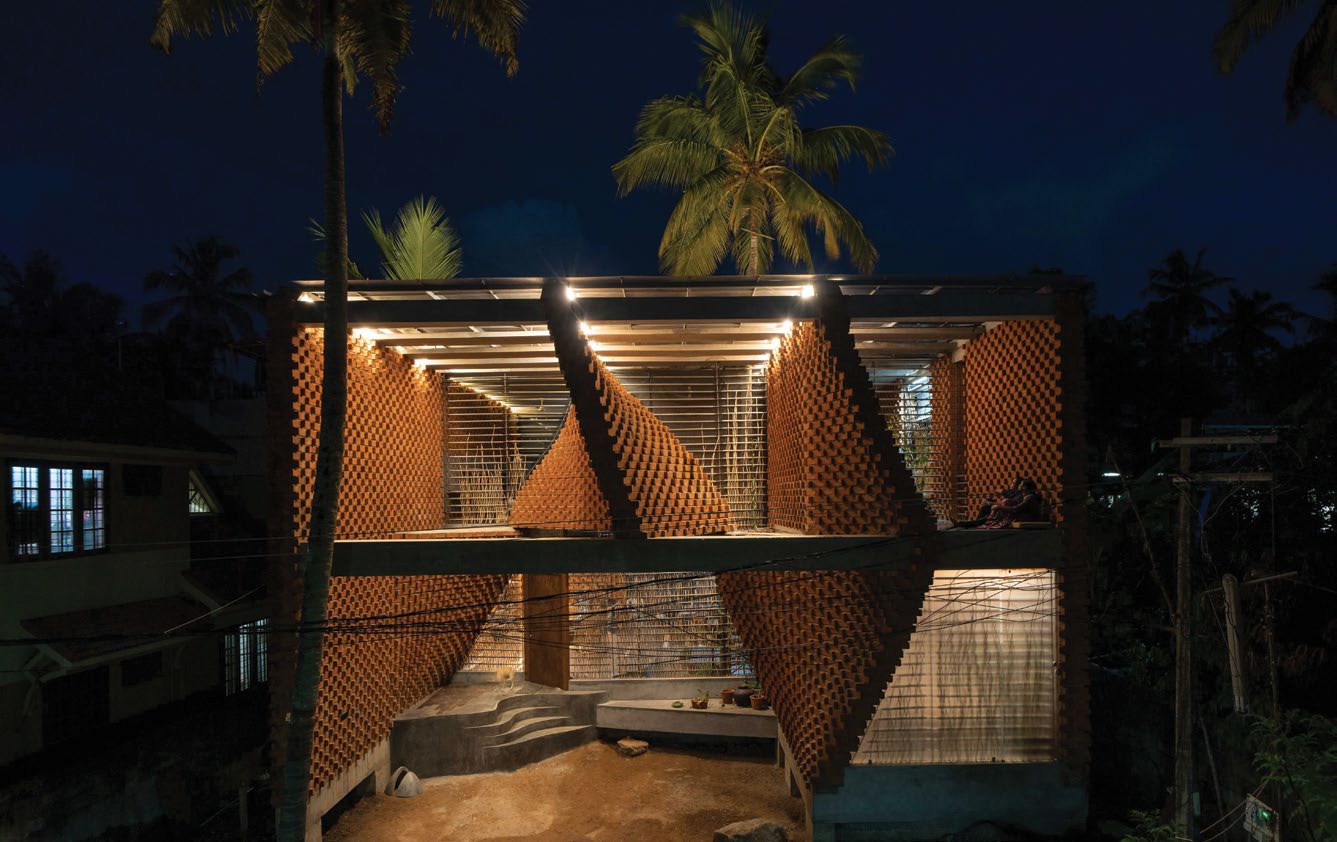
How did you start using recycled materials in your designs?
We were using mud bricks exclusively on projects when we first started. Then we began to follow Gandhi’s philosophy. We saw there were a lot more resources we could incorporate. We created a system where we took whatever was available from the area. Sometimes obtaining mud can be a problem, and we often found there was already a building on the site that we were asked to demolish. Instead of dumping that waste, we said: “There are a lot of raw materials here. You don’t need to buy them.” Today we use a combination of mud and waste.
What are some of the challenges of converting unattractive materials into something that’s beautiful? Are people turned off by the idea of using debris and plastic to build their homes?
The challenge started when humans decided their homes are for showcasing their ego. Once that happened, it was all about: How do I show off? How do I cement my position on the top ladder of society? This is a big challenge, to be honest. But on the other side are people who understand
the damage that construction inflicts on ecosystems and the environment. I think the pandemic helped more people understand that we cannot go on like this forever.
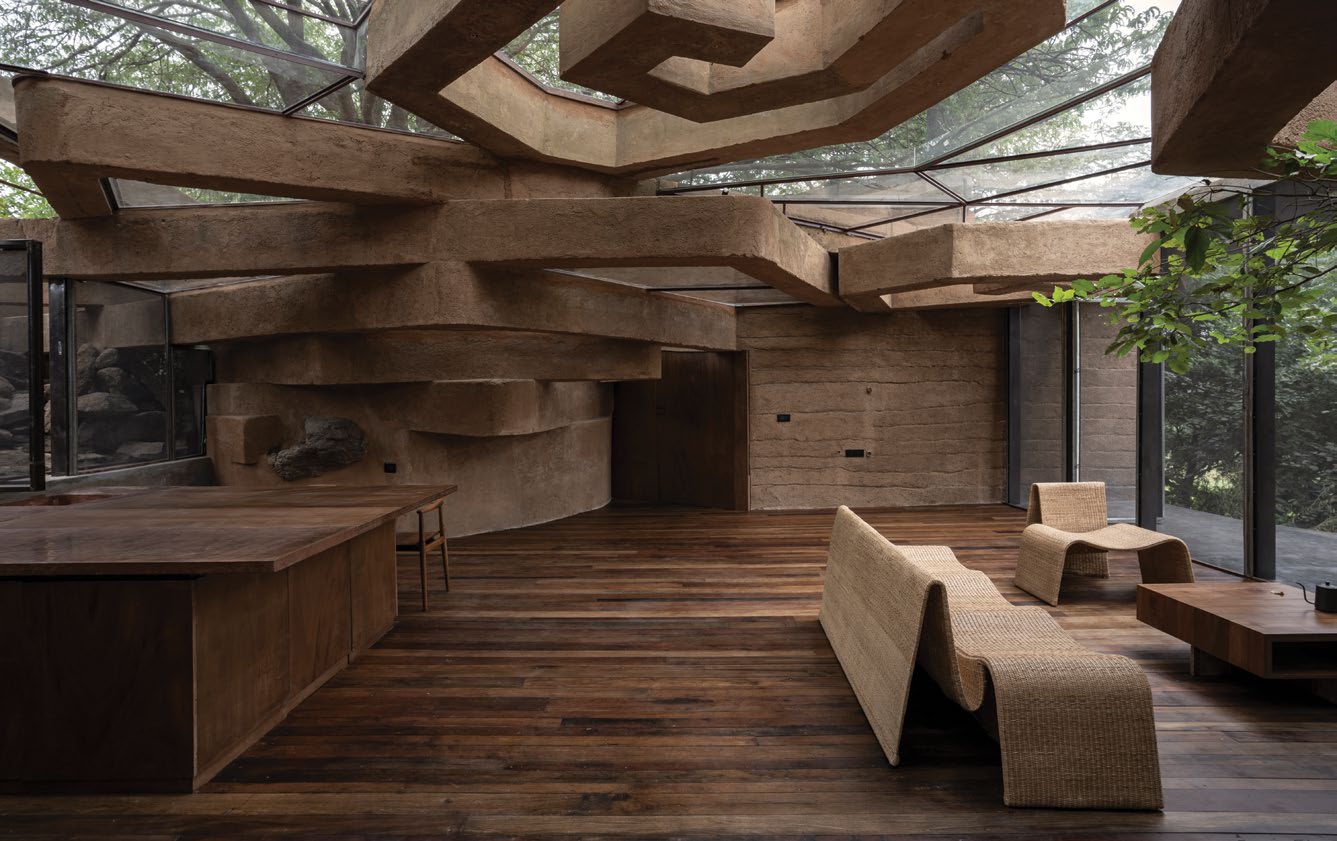
Are most of your clients generally already aligned with your worldview or do you find that it takes some convincing?
This has become more difficult because most people you meet nowadays think they are sustainable. They want to contribute to the environment, but they are only happy to contribute in small, small ways—by not using plastic straws or something like that. But what really matters is a fact like this: The construction industry uses about 30-40% of the world’s resources.
Unless we put our mind to this, we’re not going to make a major difference by using plastic straws. We need to understand that we must change our outlook toward our shelters. Many people think they’re being eco-friendly, but they’re not actually contributing in a significant way when it comes to bigger things, like their house or occupation.
Chuzhi House has been much praised. What makes this project so special?
This is a small house on the outskirts of Shoolagiri in Tamil Nadu, and it’s an example of “camouflage architecture.” It’s on a rocky terrain populated by trees and shrubs. Most architects would remove some of the vegetation and rocks, level the land, and build on a flatter surface. But we built right into the terrain, camouflaging the structure. We built circular beams with thousands of plastic bottles, reinforced concrete, and mud. We wanted to build around the trees and stones in such a way that they were protected. Each tree is an ecosystem in itself.
I never knew how it would end up, but the response blew my mind. Generally, we have a 60/40 concept, meaning that the drawings for the project are there, giving us an idea how the final product will look. But ultimately, for all of our designs, the site itself is our teacher, our master, our guru. We have to constantly pay attention to see how the structure will ultimately come up.
We need to understand that we must change our outlook toward our shelters. Many people think they’re being eco-friendly, but they’re not actually contributing in a significant way when it comes to bigger things, like their home
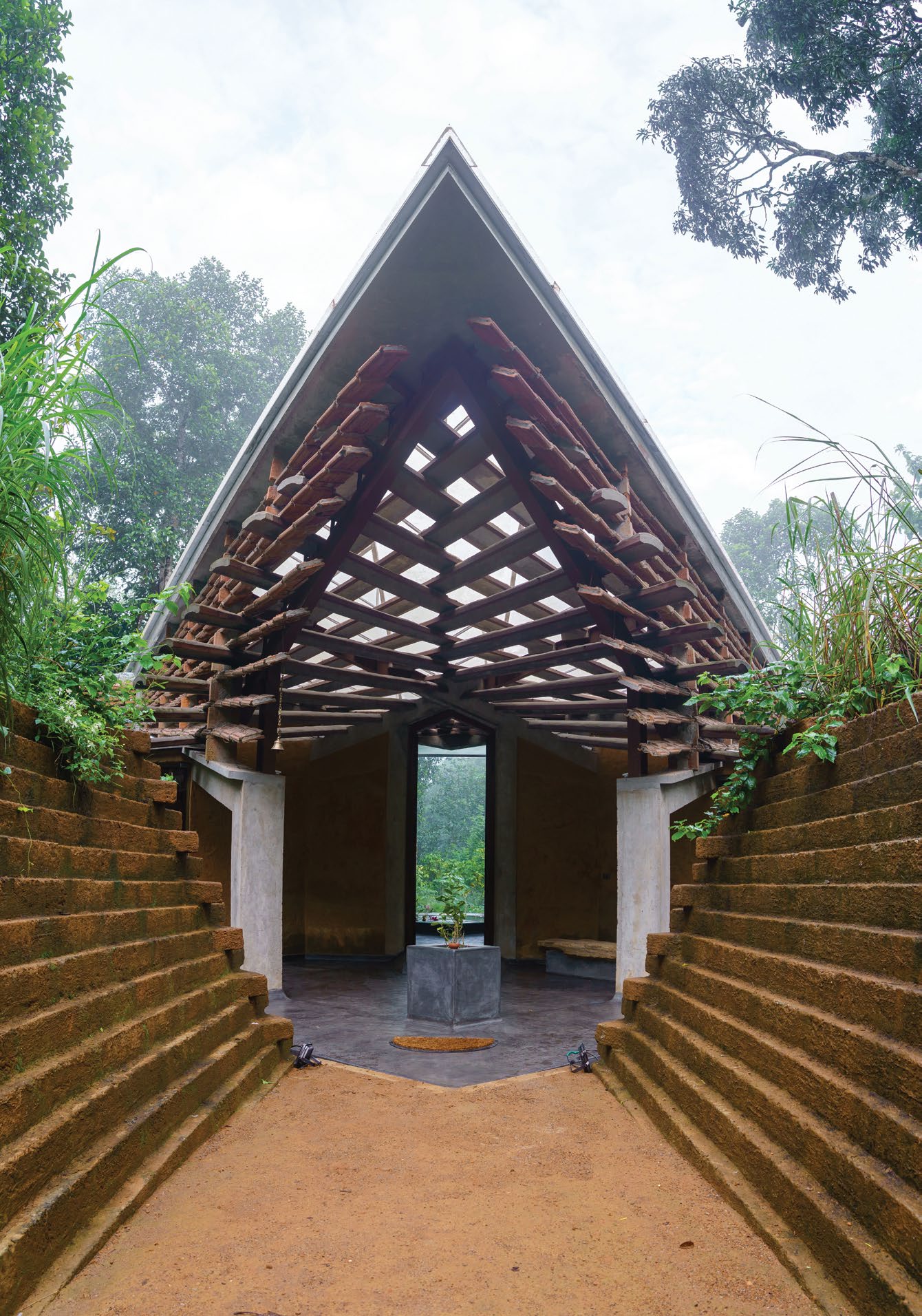
What are some other interesting projects you’re working on now?
There is a wonderful museum for a south Indian singer, SP Balasubrahmanyam. He was a great man who died during the pandemic and had a lot of fans, and we’ve asked fans to contribute used car tires to build the museum. It’s made entirely out of mud and more than 10,000 tires. These tires would otherwise end up in landfills or worse—they would be burned. There’s really no other way of repurposing or reusing tires. But when we look at tires as construction materials, they have very strong volume. If you put mud over them, it insulates them so that none of the toxicity of the tire is released. That’s a major advantage of combining materials.
We are also doing the Sharjah Biennale pavilion in the United Arab Emirates. We are also building that structure out of used tires because there is a lot of such waste in the world. India discards half a million tires every day. And the rest of the world sends another half a million tires to India each day to dispose of them.
What are your goals for the next few years?
We would like to see these concepts spread. Environmental damage is not something that’s only affecting our country.
It’s impacting every country in the world. Construction is happening everywhere all the time. It would be great if we can share our knowledge. We do not have other aspirations, other than just to make sure that those who follow us—you know there are a lot of new Wallmakers who are now taking baby steps in the world of construction—we just want to make things easier for them so that they can really flourish.
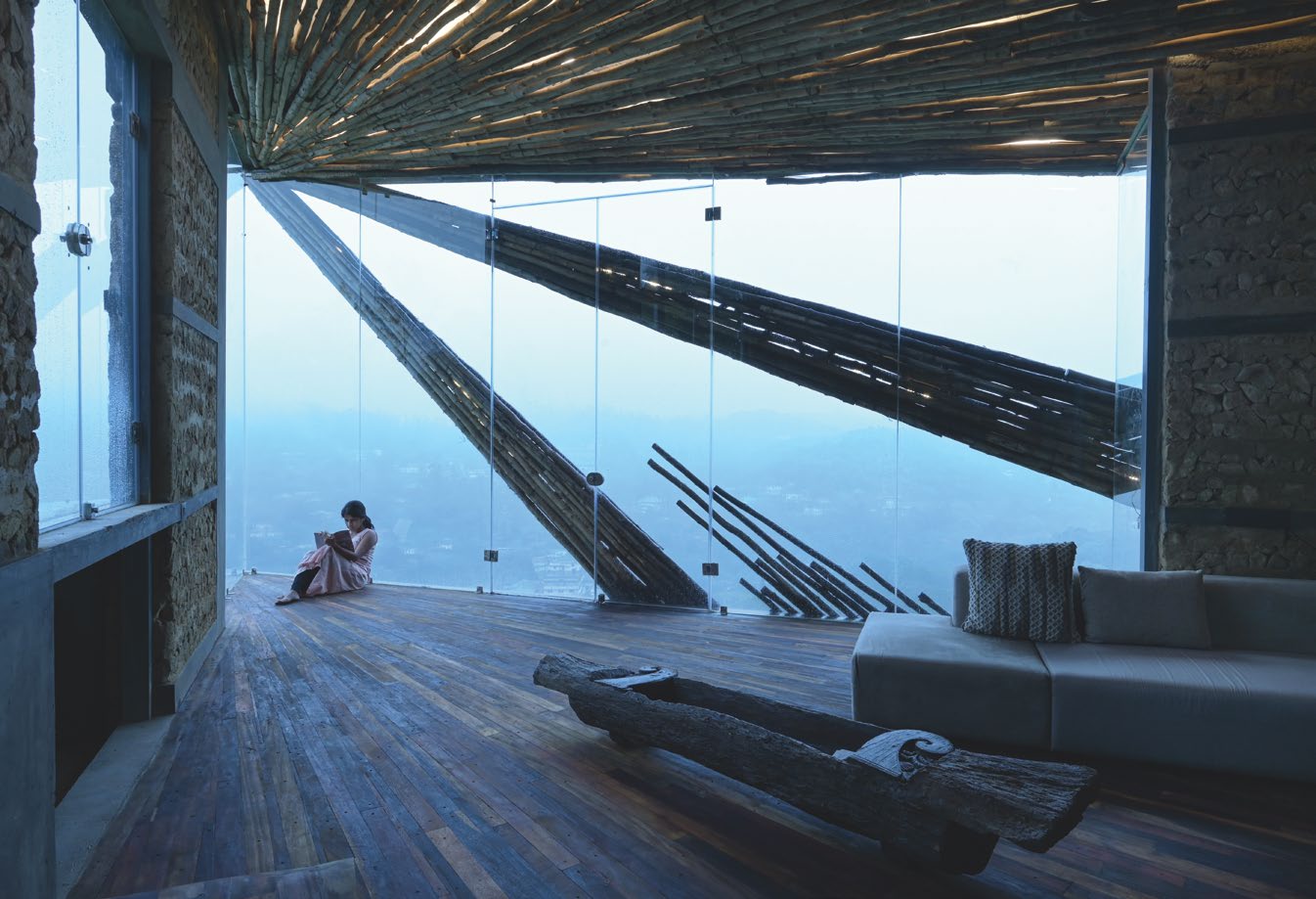
How can more architects and construction companies move toward true sustainability?
There are a lot of people who are trying to work in more sustainable ways. The challenge very often is that the original concept gets diluted when it comes to mass production. Sustainability is a really, really misused word in the industry. Many non-sustainable techniques are called sustainable. Many non-eco-friendly products are called eco-friendly. It’s something that architects should be very careful about. Many architects and designers are flocking to these concepts because they are so popular. The problem is that the concepts are easily diluted. There’s nothing wrong at all with commercial aspirations. Commercial success in construction and design is truly wonderful. But greed is not good.
This article was originally published on asiarealestatesummit.com. Write to our editors at [email protected].
Recommended
Why Asia’s mixed-use developments are the future of real estate
Dynamic integrated communities are fusing real estate with commercial, leisure, and other amenities
Transforming cities worldwide: Surbana Jurong’s vision for the future
Surbana Jurong excels in master planning, infrastructure, and urban development
Inside Asia’s commercial real estate: The cities thriving and those facing tough times
Shifting consumer preferences, and fluctuating economic policies mean commercial real estate investors in Asia must remain agile
Why young Asians are choosing singlehood and reshaping real estate trends
Marriage is out, and singlehood is in as young Asians subvert convention to explore alternative paths in real estate



